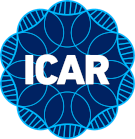Conformation Recording: Recommendation on scoring conformation defects in cattle
Introduction
In many conformation systems for cattle defects are scored when scoring animals for linear traits and general characteristics. Most of the time defects are used to determine the score for general characteristics.
This chapter describes characteristics of defects for dairy, dual purpose and beef cattle and contains a list of proposed defects which could be used. They are considered to be important for one of the breed types (dairy, dual purpose and/or beef) and could be considered by countries or organizations, that do not score them up to now. If a country or organization has already a list of defects, they could consider to reduce the list according to the ICAR list.
Description of defect
Defects are not there to describe the whole variation in the population, but only a problematic trait (e.g. side leak) or a trait with a high enough frequency in the population.
The number of defects scored should be kept as low as possible as more defects means also more labor.
The easiest way to score conformation defects in a digital system is when a cow is scored for a group of the linear traits (frame, dairy strength, mammary system, legs/feet), the classifier is requested by the system if there are any defects within this particular group.
A conformation defect could be scored when it has the following characteristics:
- heritable
- not rare
- is problematic for functionality
- is clearly described and visible
- should be scored as 0/1/2 (as soon as there is more variation and the frequency in population is considerable, one could/should consider to score this trait as a linear trait (scale 1-9)
- is used to come up with a score for a general characteristic
Defects have no value to be scored when it is not used in determining general characteristics or when it is not used in a genetic evaluation.
The advantages of scoring defects are:
- get overview what the status of a specific defect is in the population
- could be used for determining the score for general characteristics
- could be used to present figures per bull
Disadvantage of scoring defects:
- difficult to harmonize classifiers as definitions are not always clear and for training sessions it is very hard to find a group of cows representing all defects.
Defects can be scored with 0 (not present), 1 (slightly present) or 2 (pronounced defect). More practical is that classifier score defects only when they are present, 1 (slightly present) or 2 (pronounced defect).
Approved standard defects
The list with approved conformation defects is chosen such that they satisfy the characteristics mentioned in 9.2.
Per defect a definition is given in Table 2 and it is indicated in which type of breed the defect can have added value.
Table 2. List of defects in cattle.
| Defect | Definition | Used in type of breed | ||
| Dairy | Dual purpose | Beef | ||
| Open shoulder | A significant gap between the tip of the shoulder and the side of the body | X | ||
| Weak crops | The part of the animal behind the shoulder (just below the chine) is a lot narrower than the shoulder | X | X | |
| High tail | Evaluated by considering the tailhead in relation to the pins viewed from the rear. It could be considered as a defect when tailhead is at least 9 cm over the pins. | X | X | X |
| Advanced anus | Anus is ahead of pin bone. Tendency for the anus and vagina to be pulled forward. | X | ||
| Toes out front | Animal walks with a slight amount of toeing out. Maybe due to a twisting knee or to a lack of heart. | X | X | |
| Crampy | Unnatural or irregular contraction of muscles of the rear legs. | X | ||
| Thurls too far back | Ratio of distance of thurl position to rump bone and thurl position to pin bone ratio is larger than 4:1 (80%-20%) | X | ||
| Blind quarter | Quarter never given milk. | X | ||
| Webbed teats | An extra teat is attached to functional teat. | X | ||
| Side leak | Little functional hole on the side of the teat. | X | X | |
| Extra functional teats | Extra teats which produce milk. | X | ||
